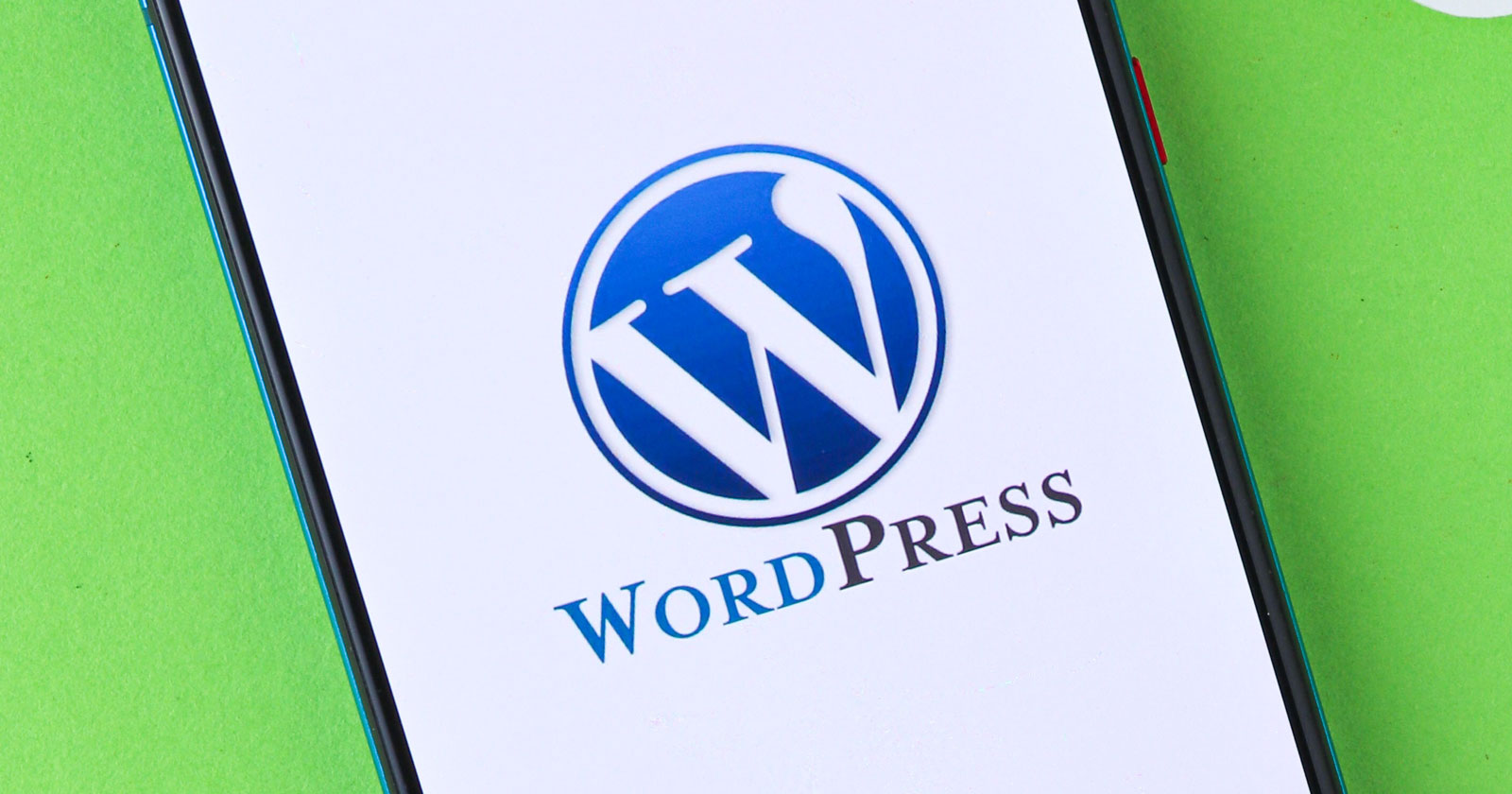SEO
Understanding the three awareness stages of your online audience
30-second summary:
- Are you confident about how your target consumer moves in the three stages, awareness, consideration, and decision?
- A website that features content only suited to the first stage of awareness will struggle to convert, whereas a site only focused on conversions may struggle to get any traffic to convert in the first place
- Here’s how you can create content that is balanced and targeted to better serve people throughout every step of their journey
Not all traffic is equal. Businesses often forget that their site visits and success metrics aren’t just numbers – they are living, breathing people who are driven by behavior. By understanding and creating content to fit the different awareness stages of that “traffic”, you can not only draw more – but efficiently turn those clicks into conversions. After all, businesses aren’t built on visits alone.
This article will show you the three main awareness stages of online traffic, what type of content fits in these, and a method for auditing your existing content. Remember, every customer goes on a journey. This is about making sure you’re at the finish line when they’re ready to convert.
The importance of knowing the awareness stages
Now, bear with us, but answer this: would you try and sell roller skates to a newborn baby or its parents? A little extreme, yes, but sometimes these make the best examples. The point is that the baby may grow into someone that needs or wants a pair of roller skates, but they’re not at that stage yet.
Understanding the different stages your potential customers are at and how they’re searching for your products/services (both directly and indirectly) will give you the accuracy to target them better. These stages are awareness, consideration, and decision. Just knowing these won’t be enough, you need a balance.
A website that features content only suited to the first stage of awareness will struggle to convert, whereas a site only focused on conversions may struggle to get any traffic to convert in the first place.
Research and roleplay will help you massively here. To get in the head of your audience and understand what their journey looks like, you should be asking yourself “What would I do if…” at almost every corner.
To better explore these stages and how they apply to content, we’ll stick to one example for the next three sections. We’ll move on from the baby with the roller skates, and instead, focus on a hypothetical Manchester-based SME that sells hearing aids and is looking to grow its customer base.
Stage 1: Awareness
This awareness stage is when the customer is just starting to realize they have a problem and that they need a solution. Before this stage, they may not have even realized that their issue could be fixed, or that it was an issue, to begin with. Good content at this stage plants seeds in their head that they don’t need to go on this way any longer.
With that in mind, you don’t want to overwhelm the reader here. Yes, they may now realize that they want a solution, but it’s exceedingly rare that a piece of content can tick all three boxes in one go. Those being – making them aware of the problem, helping them consider the options, and then decide to go with your option. That’s why we have different content for different stages.
In our example of the small business in Manchester that sells hearing aids, the content at this stage may look like this:
- ‘Five common signs of hearing loss’
- ‘Data shows that hearing loss is on the rise’
- ‘When to seek help with your hearing’
If we were writing content for this fictional company, we wouldn’t open these articles with “Now you’re here, view our huge sale on hearing aids!”. Instead, we’d relate to the problems the reader may be having. In fact, throughout all of these stages, your language should be empathetic, solution-focused, and relatable to the reader as much as possible.
Picture a woman in her 40s that has been playing guitar in a rock band since her youth. For her, not being able to hear the nuances of music would almost feel like having an oxygen supply cut off. She might be having some hearing issues, but her search might not start straight away with “hearing aids near me”. She’d try to learn about her issues, if they’re common and how they can be fixed. In these pages, we’d relate to hearing problems and ultimately (but without sounding too sales-y) suggest that hearing aids have helped millions of people by the end.
By writing content targeting this stage, you can be there right at the start of the consumer’s journey. While they will be more likely to convert at the end of that journey, a good content strategy is all about balance. This brings us to the next stage.
Stage 2: Consideration
If the first stage is all about letting them know they have a problem, this is all about showing them how they can fix it. Here, the reader would actively be looking for a solution and considering their options.
While our hypothetical business may be experts at helping hearing loss, there are other ways to do so than just providing hearing aids. We can’t just assume that hearing aids are instantly the preferred option for every visitor. The challenge here is about balancing knowledge, empathy, and delivering content that is objective and genuinely useful to your consumer. However, while you educate your target audience about their options, you can add in smart CTAs that prompt the person towards a landing page that will drive revenue for your business – making this more a choice that your consumer made vs what you wanted to force down their throat.
Sticking to our example of that Manchester SME selling hearing aids, content at this stage may look like this:
- ‘Six ways to help your hearing loss’
- ‘The five best hearing aids in the UK’
- ‘Why even teenagers should consider hearing aids’
As this is the middle stage, you’ll want to avoid leaning too much towards ‘awareness’ and too much towards ‘decision’. You won’t want to speak down to the reader and spend paragraphs explaining the very basics of hearing loss. You also won’t want to open up and ramble on about your great new sale on hearing aids.
Picture a scale, with ‘inform’ on the left and ‘sell’ on the right. You want this to be pretty evenly balanced, but leaning slightly to the left and on the side of ‘inform’.
Show the reader their options, and educate them on the solutions available. Then, if/when they decide that what you provide is the fix for them, they’re already on the right website! They just need a page where they can convert and make that final decision. That leads us on nicely to…
Stage 3: Decision
We mentioned before how awareness content gets you in front of the consumer at the start of their journey. While there’s a lot of value to being there at the starting line, it is content suited to this stage that turns clicks into customers.
That’s why pages here will move away from the blog/article format of the content suggested for the other stages. Instead, you want pages designed specifically for selling the reader on your product or service, with the option to convert right there.
For our hypothetical hearing aid business, the pages designed for this stage may look like:
- Category pages showing off their best brands
- Product pages where you can purchase hearing aids
- A service page to organize a hearing test (with a contact form)
These pages will be laser-focused on selling, while still informing the readers why your business is a better choice for them over all of your competitors. This means a huge focus on USPs.
In the case of our hypothetical hearing aid company, these may include free delivery, the lowest prices in Manchester, or even five years of free insurance. Your USPs should all be sung about on these decision-focused pages. Remember, at this point, they know they want whatever it is you’re selling, so you don’t need to go to great lengths to explain the very basics of your offerings. Just why your business is the best for them. Ensure to have some positive reviews scattered across these pages.
The content here should be easy to read, scannable, and supported by images if you think that’s something your audience is interested in (always look to see what competitors are doing).
Outside of the copy, for ecommerce businesses, the path to purchasing these products should be clear, with large buttons to show the user that this is where you can buy them. If you’re a lead generation business, then there should be plenty of CTAs (calls to action) to point the user to contact forms, phone numbers, or email addresses.
Key takeaways
Like with any marketing or psychology model, there are variants of this with even more steps. However, if you boil it down, we believe that only three steps are necessary for most businesses. The important thing to remember is that the same user might not go through this entire journey on your website in one session. A balanced content strategy means that you can attract any potential customer at any stage, no matter where they are in their purchasing journey.
The danger of having an imbalance in your content strategy is that there might be plenty of blog posts around the first awareness stage, but users don’t realize that you can solve the problem they now realize they have. On the flip side, you could have most of your content focused on the final stage, but you may struggle to draw in the customers that don’t even realize they need you.
That’s why we recommend you run a content audit on your website to see how balanced your current output is. Create a table like the one below and add your existing content to it.
In the example here, we’ll use the ideas we used for our Manchester business:
| Awareness Stage Content | Consideration Stage Content | Decision Stage Content |
|
Five common signs of hearing loss |
Six ways to help your hearing loss | Category pages showing off their best brands |
|
How to improve your hearing at concerts |
The five best hearing aids in the UK | Product pages where you can purchase hearing aids |
|
When to seek help with your hearing |
Why even teenagers should consider hearing aids | A service page to organize a hearing test (with a contact form) |
While mapping your pages to this, you should be able to easily identify where gaps are and then plan your content strategy around filling those in. ‘Mapping’ is a great term because all successful journeys involve a map.
If you’re just publishing random content with no overall purpose, you’re stumbling around in the dark and hoping you’ll land up where you want to go. A quality content strategy is all about understanding journies and being there for whatever step of it your customer is on.
Jack Bird is the Content Operations Lead at the Manchester-based SEO and digital marketing agency, Add People.
Subscribe to the Search Engine Watch newsletter for insights on SEO, the search landscape, search marketing, digital marketing, leadership, podcasts, and more.
Join the conversation with us on LinkedIn and Twitter.
SEO
Executive Director Of WordPress Resigns

Josepha Haden Chomphosy, Executive Director of the WordPress Project, officially announced her resignation, ending a nine-year tenure. This comes just two weeks after Matt Mullenweg launched a controversial campaign against a managed WordPress host, which responded by filing a federal lawsuit against him and Automattic.
She posted an upbeat notice on her personal blog, reaffirming her belief in the open source community as positive economic force as well as the importance of strong opinions that are “loosely held.”
She wrote:
“This week marks my last as the Executive Director of the WordPress project. My time with WordPress has transformed me, both as a leader and an advocate. There’s still more to do in our shared quest to secure a self-sustaining future of the open source project that we all love, and my belief in our global community of contributors remains unchanged.
…I still believe that open source is an idea that can transform generations. I believe in the power of a good-hearted group of people. I believe in the importance of strong opinions, loosely held. And I believe the world will always need the more equitable opportunities that well-maintained open source can provide: access to knowledge and learning, easy-to-join peer and business networks, the amplification of unheard voices, and a chance to tap into economic opportunity for those who weren’t born into it.”
Turmoil At WordPress
The resignation comes amidst the backdrop of a conflict between WordPress co-founder Matt Mullenweg and the managed WordPress web host WP Engine, which has brought unprecedented turmoil within the WordPress community, including a federal lawsuit filed by WP Engine accusing Mullenweg of attempted extortion.
Resignation News Was Leaked
The news about the resignation was leaked on October 2nd by the founder of the WordPress news site WP Tavern (now owned by Matt Mullenweg), who tweeted that he had spoken with Josepha that evening, who announced her resignation.
He posted:
“I spoke with Josepha tonight. I can confirm that she’s no longer at Automattic.
She’s working on a statement for the community. She’s in good spirits despite the turmoil.”
Screenshot Of Deleted Tweet
Josepha tweeted the following response the next day:
“Ok, this is not how I expected that news to come to y’all. I apologize that this is the first many of you heard of it. Please don’t speculate about anything.”
Rocky Period For WordPress
While her resignation was somewhat of an open secret it’s still a significant event because of recent events at WordPress, including the resignations of 8.4% of Automattic employees as a result of an offer of a generous severance package to all employees who no longer wished to work there.
Read the official announcement:
Featured Image by Shutterstock/Wirestock Creators
SEO
8% Of Automattic Employees Choose To Resign

WordPress co-founder and Automattic CEO announced today that he offered Automattic employees the chance to resign with a severance pay and a total of 8.4 percent. Mullenweg offered $30,000 or six months of salary, whichever one is higher, with a total of 159 people taking his offer.
Reactions Of Automattic Employees
Given the recent controversies created by Mullenweg, one might be tempted to view the walkout as a vote of no-confidence in Mullenweg. But that would be a mistake because some of the employees announcing their resignations either praised Mullenweg or simply announced their resignation while many others tweeted how happy they are to stay at Automattic.
One former employee tweeted that he was sad about recent developments but also praised Mullenweg and Automattic as an employer.
He shared:
“Today was my last day at Automattic. I spent the last 2 years building large scale ML and generative AI infra and products, and a lot of time on robotics at night and on weekends.
I’m going to spend the next month taking a break, getting married, and visiting family in Australia.
I have some really fun ideas of things to build that I’ve been storing up for a while. Now I get to build them. Get in touch if you’d like to build AI products together.”
Another former employee, Naoko Takano, is a 14 year employee, an organizer of WordCamp conferences in Asia, a full-time WordPress contributor and Open Source Project Manager at Automattic announced on X (formerly Twitter) that today was her last day at Automattic with no additional comment.
She tweeted:
“Today was my last day at Automattic.
I’m actively exploring new career opportunities. If you know of any positions that align with my skills and experience!”
Naoko’s role at at WordPress was working with the global WordPress community to improve contributor experiences through the Five for the Future and Mentorship programs. Five for the Future is an important WordPress program that encourages organizations to donate 5% of their resources back into WordPress. Five for the Future is one of the issues Mullenweg had against WP Engine, asserting that they didn’t donate enough back into the community.
Mullenweg himself was bittersweet to see those employees go, writing in a blog post:
“It was an emotional roller coaster of a week. The day you hire someone you aren’t expecting them to resign or be fired, you’re hoping for a long and mutually beneficial relationship. Every resignation stings a bit.
However now, I feel much lighter. I’m grateful and thankful for all the people who took the offer, and even more excited to work with those who turned down $126M to stay. As the kids say, LFG!”
Read the entire announcement on Mullenweg’s blog:
Featured Image by Shutterstock/sdx15
SEO
YouTube Extends Shorts To 3 Minutes, Adds New Features

YouTube expands Shorts to 3 minutes, adds templates, AI tools, and the option to show fewer Shorts on the homepage.
- YouTube Shorts will allow 3-minute videos.
- New features include templates, enhanced remixing, and AI-generated video backgrounds.
- YouTube is adding a Shorts trends page and comment previews.
-

 WORDPRESS3 days ago
WORDPRESS3 days agoWordPress biz Automattic details WP Engine deal demands • The Register
-
SEARCHENGINES5 days ago
Daily Search Forum Recap: September 30, 2024
-

 SEARCHENGINES6 days ago
SEARCHENGINES6 days agoGoogle Volatility With Gains & Losses, Updated Web Spam Policies, Cache Gone & More Search News
-

 SEO7 days ago
SEO7 days ago6 Things You Can Do to Compete With Big Sites
-
SEARCHENGINES4 days ago
Daily Search Forum Recap: October 1, 2024
-

 SEO6 days ago
SEO6 days agoAn In-Depth Guide For Businesses
-

 AFFILIATE MARKETING6 days ago
AFFILIATE MARKETING6 days agoThis Minimalist Lamp Lets You Pick From 16 Million+ Lighting Colors for Maximum Productivity
-

 AFFILIATE MARKETING6 days ago
AFFILIATE MARKETING6 days agoNvidia CEO Jensen Huang Praises Nuclear Energy to Power AI











You must be logged in to post a comment Login